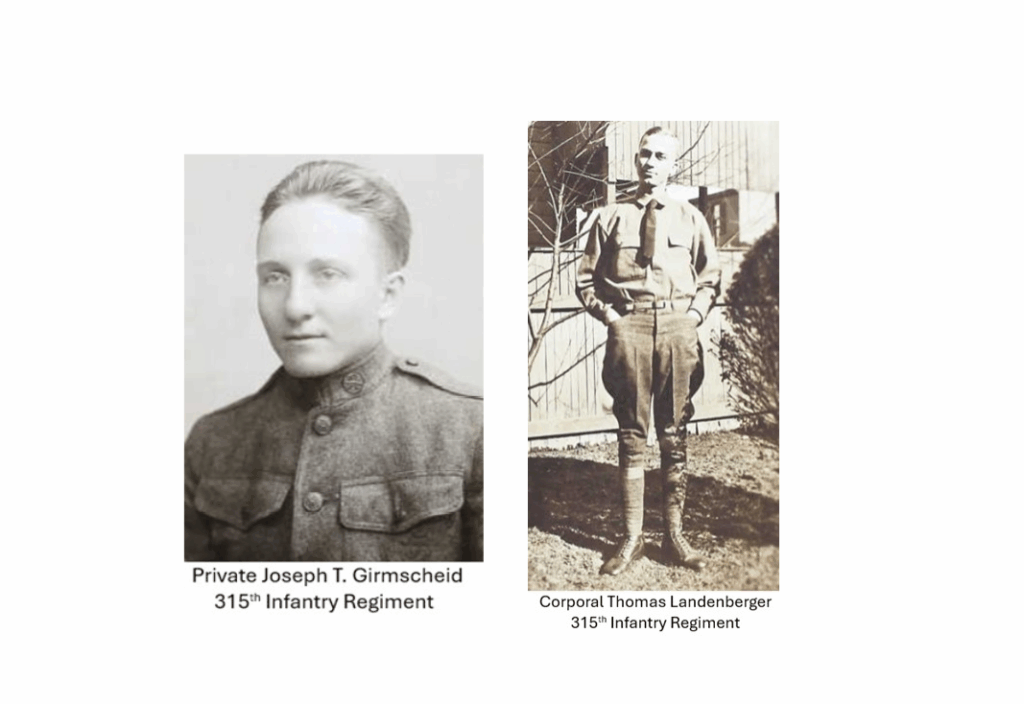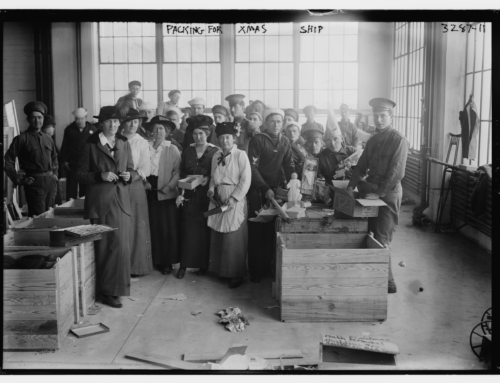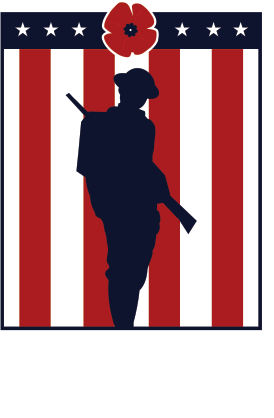Chris Gibbons: A Memorial Day tribute to “Philadelphia’s Own”
Published: 26 May 2025
By Chris Gibbons
via the Broad + Liberty website

Philadelphias-own-v3-1024×704
On September 21, 1917, a little over five months after the U.S. formally entered World War I, the first 361 recruits for the 315th Infantry Regiment arrived at Camp Meade in Maryland. All of them were from Philadelphia and word had come down from U.S. Army command that the regiment would be made up exclusively of men from the City of Brotherly Love. This subsequently led to the nickname for the 315th Infantry — “Philadelphia’s Own” — and it was one of the regiments assigned to the 79th Division.
The official record of the regiment during the Great War, authored by several officers of the 315th, noted that patriotic enthusiasm among these early Philadelphia recruits was so high that thorough physical examinations conducted at Camp Meade revealed that one recruit “was found to possess a wooden leg and another a glass eye.”
In late May of 1918, after ten months of training at Camp Meade, which included a proud march by the regiment on April 6, 1918, through the historic streets of Baltimore for review by President Woodrow Wilson, news from Europe quickly spread among the troops that the U.S. Army’s First Division had finally taken the offensive and seized the village of Cantigny from German forces. The troops of the regiment then knew that their long-awaited departure for France was imminent. It was during this time that small numbers of troops from outside of Philadelphia were added to the 315th, and in early July 1918, the regiment boarded the troop ships U.S.S. America and U.S.S. Leviathan in Hoboken, N.J. to begin their nine-day overseas trip to Brest harbor in France.
Dear Mother,
I arrived safe and sound over here somewhere and feeling fine. We had a very nice trip across the ocean, and I did not get seasick…It took us 9 days to get over here…Hell or Hoboken by Christmas — meaning that the end is very near and all we can do is to pray for the best. (Excerpt from letter written by Private Joseph T. Girmscheid, 315th Infantry Regiment, to his mother in Philadelphia)
On September 13, 1918, the 315th Infantry entered the front lines for the first time in an area about fifteen kilometers northwest of Verdun called “Sector 304.” A few years prior, it had been the site of one of the deadliest battles of the Great War and the official record of the 315th Infantry Regiment revealed the horrific scene that the men from Philadelphia came upon as they arrived: “On the right of the Regimental sector, during the night of September 13th-14th, Company ‘E’ entered the front line trenches on ‘Hill 304,’ where human skulls and bones still lay in mute evidence of the titanic struggles of the past. Eight hundred meters further back, Companies ‘G’ and ‘H’ took over the line of resistance with the latter company on the right. These companies lay at the head of ‘Death Valley,’ the graveyard of thousands of French and German dead.”
On September 15th, the Regiment suffered its first casualty as Corporal Thomas Landenberger of Philadelphia was killed, and two others were wounded, when a German fighter plane bombed the Headquarters building. In the days following Landenberger’s death, rumors began to spread among the 315th that a major assault by the Allies was imminent as French marines were constructing large gun emplacements and heavy howitzers were being positioned near their sector. That rumored assault would turn out to be the great Meuse–Argonne Offensive.
“Well the American boys are certainly going ahead without any stop, they’re knocking the Germans right and left before they can get their second wind… but Mother, dear don’t worry just pray for me and everything will come out all right. I am going to Church every Sunday and receiving communion and praying night and day so the war will end soon and then we all will be happy.” (Excerpt from letter written by Private Joseph T. Girmscheid, 315th Infantry Regiment, to his mother in Philadelphia)
In the early morning hours of September 26, 1918, a rolling fog crept through the Argonne Forest as the officers of the 79th Division instructed the men of their regiments to prepare for battle. Helmet straps were tightened. Field packs, gas masks, rifles, and ammunition were checked. Fighting was expected to be at close quarters, and a final order was barked to the infantry: “Fix bayonets!”
At 5:30 a.m., following a six-hour Allied artillery barrage from more than 2,700 guns, the men of the 79th Division went “over the top” as the largest and deadliest battle ever fought by American soldiers commenced: the Meuse-Argonne Offensive. The primary objective was to capture the Sedan–Mezieres railroad hub, Germany’s main supply and communication link, located between the River Meuse and the Argonne Forest. Opposing the attacking Allied soldiers along this front just north of Verdun were 40 German Army divisions.
Per the regiment’s official record, “the 315th Infantry started its advance across No Man’s Land when the last elements of the 314th Infantry had passed a thousand meters beyond the jumping-off point. On its right was the 4th Division, on its left the 313th and 316th Infantries, the 313th Infantry on the front line.” Corporal Joseph McKee of Philadelphia wrote home about the initial ferocity of the battle and how lucky he was to have survived it. “It was miraculous,” he wrote, “and I can only compare it to being out in a hail-storm and not getting hit by the hail.” McKee also wrote that more than half of his Company D in the 315th Infantry had been put out of action in the initial days of the battle.
→ Read the entire article on the Broad + Liberty website here:
External Web Site Notice: This page contains information directly presented from an external source. The terms and conditions of this page may not be the same as those of this website. Click here to read the full disclaimer notice for external web sites. Thank you.



